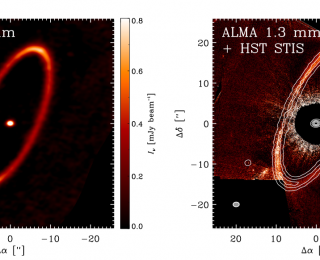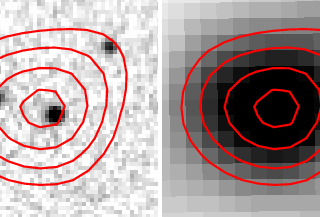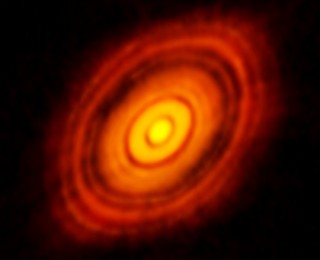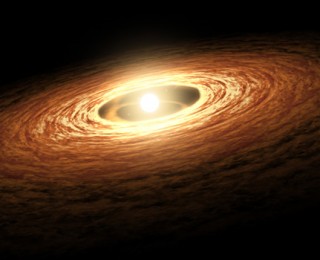
A Ring of Ice and Glows (around Fomalhaut)
ALMA has taken a brand-new image of Fomalhaut’s famous debris disk. What can we learn from it?

ALMA has taken a brand-new image of Fomalhaut’s famous debris disk. What can we learn from it?

Folmahaut’s debris disk has been observed to have an unusual brightening in millimeter wavelengths.

How do planets meet their ends? For many of the smallest worlds, it maybe as a debris disc strewn around the tiny white dwarf that is all that is left of their stars. The faint infrared glow from nearly forty such discs have been discovered, their rocky origins given away by the chemical composition of the material falling onto the parent white dwarf. Today’s paper adds another disc to the sample, although not without difficulty.

NN Serpentis has everything: a white dwarf + main sequence binary system that is believed to contain two planets and, now, a disc of debris.

Nearly a year ago, the ALMA collaboration released this stunning image of the young star HL Tau. The sub-millimeter wavelengths of light that ALMA detects revealed a vast disc of gas and dust, several times larger than Neptune’s orbit. Intriguingly, the disc was divided up into a series of well-defined, concentric rings.
The cause of the rings seemed clear: There must be planets around HL Tau, their gravity sculpting the gas and sweeping out the dark gaps in the disc.

There does not seem to be enough mass in protoplanetary disks to build the planetary systems we’ve detected. The solution: planet formation might start sooner than previously thought.